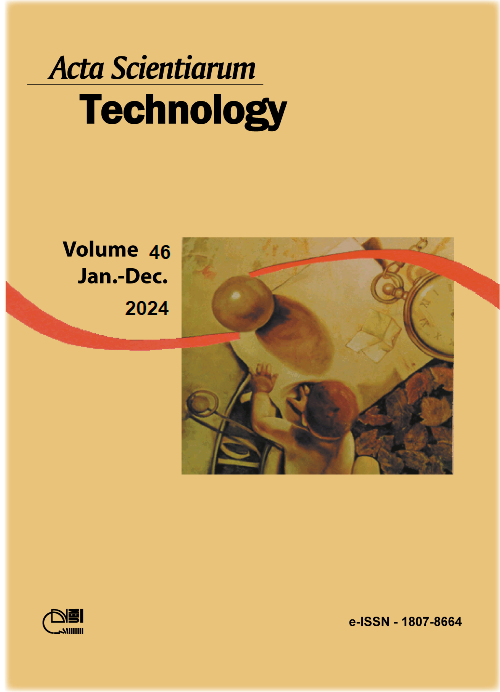Discrimination of baru oil adulteration with soy oil using portable near infrared spectroscopy, Fourier-transform infrared spectroscopy and Partial Least-Squares Discriminant
DOI:
https://doi.org/10.4025/actascitechnol.v46i1.63058Palavras-chave:
chemometrics, vibrational spectroscopy, cerrado, Dipteryx alata vog.Resumo
Considered an important source of bioactive compounds and unsaturated fatty acids, Baru oil comes from the Brazilian Cerrado ecoregion and is sold with high value. Methods to detect tampering to certify the authenticity of this type of product are in great demand for quality control. Herein, this study used partial least squares for discriminant analysis (PLS-DA) combined with Fourier-transform infrared spectroscopy (FTIR) and portable near-infrared spectroscopy (NIR) for the detection of adulteration in Baru oil, using soybean oil as an adulterant. Adulteration concentrations were 10, 30, 50, 60, and 80% for analysis by NIR and 10, 30, 50, 60, 70, and 90% for FTIR. After the spectral range selection and pre-processing steps, discrimination models showed good discrimination, and the efficiency was confirmed from the figures of merit, which highlighted percentages above 99% with both techniques used. Anomalous samples were identified in discrimination models obtained with a portable NIR spectrometer in the outlier detection step. The methodology evaluated is direct, fast, and non-destructive, in which the PLS-DA models obtained from the sets of spectra by FTIR presented superior results than those evaluated with the portable NIR spectrometer; however, the latter was also efficient in discriminating as adulterated, reinforcing the feasibility of using spectroscopic techniques and chemometric tools.
Downloads
Downloads
Publicado
Como Citar
Edição
Seção
Licença
DECLARAÇíO DE ORIGINALIDADE E DIREITOS AUTORAIS
Declaro que o presente artigo é original, não tendo sido submetido í publicação em qualquer outro periódico nacional ou internacional, quer seja em parte ou em sua totalidade.
Os direitos autorais pertencem exclusivamente aos autores. Os direitos de licenciamento utilizados pelo periódico é a licença Creative Commons Attribution 4.0 (CC BY 4.0): são permitidos o compartilhamento (cópia e distribuição do material em qualqer meio ou formato) e adaptação (remix, transformação e criação de material a partir do conteúdo assim licenciado para quaisquer fins, inclusive comerciais.
Recomenda-se a leitura desse link para maiores informações sobre o tema: fornecimento de créditos e referências de forma correta, entre outros detalhes cruciais para uso adequado do material licenciado.















